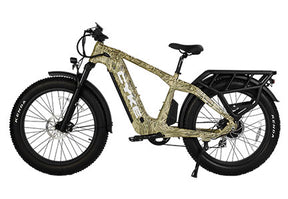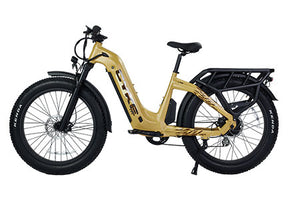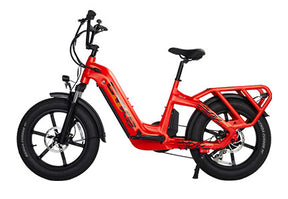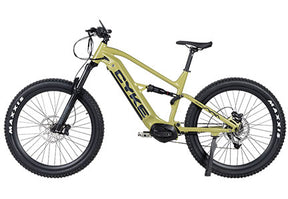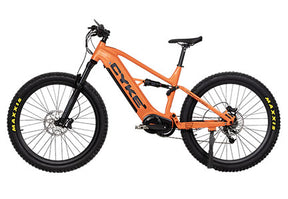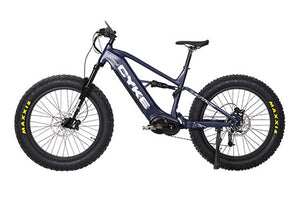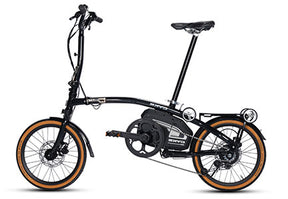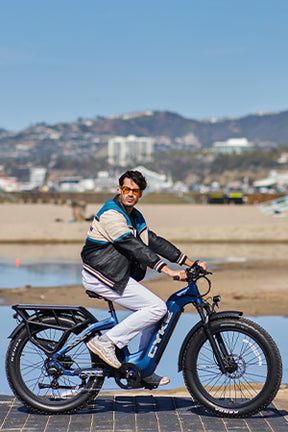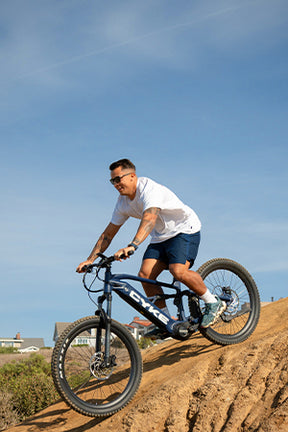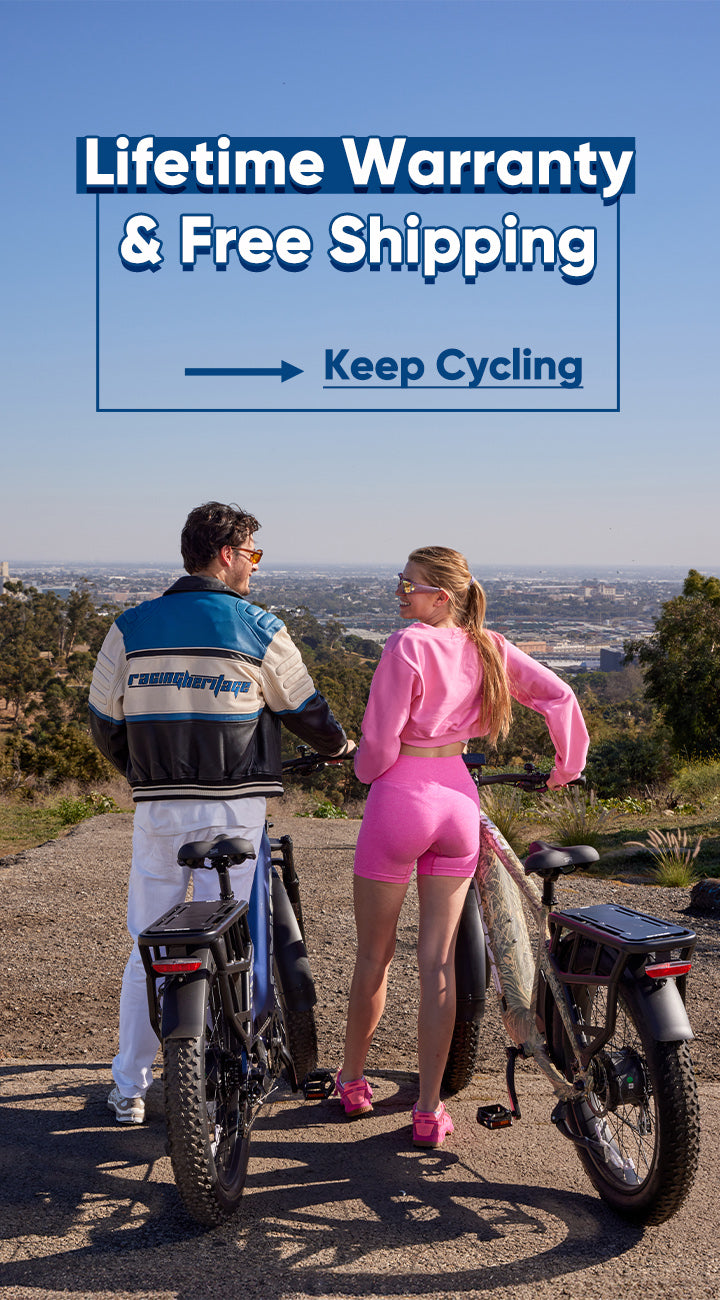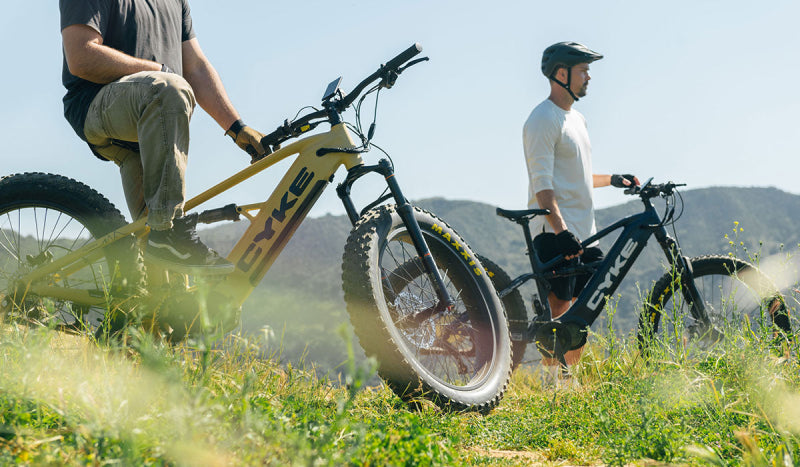Featured in this posts
5 Essential Tips for Winter Cycling
Cycling in winter is worth it, you get to ride on snowy trails and cold roads. But as every rider knows, winter cycling has its own set of challenges, from icy paths to staying warm and safe.
So if you’re going to tackle winter rides, here are 5 winter cycling tips to help you ride comfortably and safely until Spring rolls around.

1. Dress in Layers with the Right Winter Cycling Gear
Your clothing should be as adaptable as your ride in winter. You have to deal with unpredictable weather while balancing the warmth needed for long cold descents with the heat generated during hard climbs.
The key is layering to adapt to these changing temperatures and activity levels.
Here’s how to do it:
Moisture-Wicking Base Layer
Use merino wool or synthetic fabrics to wick sweat away from your skin and stay dry and warm, not cold. Avoid cotton, it retains moisture and will leave you cold.
Insulating and Weatherproof Layers
Add an insulating layer to trap heat, like a fleece or lightweight jacket. Top it off with a weatherproof outer shell to protect it from wind, rain, or snow. Look for breathable, wind-resistant fabrics for comfort during exercise.
Keep Your Legs Warm and Protected
Full bibs are a tried and tested option for consistent warmth and coverage. They provide great insulation and stay in place all day. For changeable weather, leg warmers are a flexible option. They’re easy to remove or add as conditions change, perfect for unpredictable winter rides. Consider a stretchy soft shell over trousers if you're riding rougher trails. They block cold winds and repel showers.
Accessories for Extremities
Insulated gloves, thermal socks, and windproof shoe covers are essentials to protect your hands and feet. You can also use a balaclava or thermal headband to keep your head warm and fit under your helmet.
2. Prepare Your Bike with Essential Winter Biking Gear
Your bike needs special attention to tackle winter conditions effectively. Preparing it with the right upgrades, winter biking gear, and maintenance can make a big difference.
Upgrade to Fat Tires or Winter-Specific Tires
Fat tires are better on snow and ice, and perfect for winter cycling. Their wider surface area distributes the weight more evenly, so you don’t slip and are more stable. If you can’t fit fat tires, winter-specific tires with studs are a great alternative. These tires give you a better grip on icy surfaces, so you can stay in control on slippery roads.
Install Fenders and Maintain Your Chain
Fenders keep you and your clothes clean and dry from slush and grime. Also clean and lubricate your chain to prevent rust and for smooth performance in wet conditions.
Ensure Proper Lighting and Reflectors for Winter Cycling
Winter rides often take place in low-light conditions. Fit your bike with bright front and rear lights and add reflective strips for extra visibility. Choose rechargeable lights with long battery life for cold-weather rides.
3. Must-Have Cold Weather Cycling Gear for Winter Adventures
Invest in good cold weather cycling gear, and you’ll stay warm, dry, and safe on frosty rides.
Insulated Jackets and Waterproof Pants
An insulated cycling jacket with windproof and waterproof features is a must. Pair with waterproof trousers to stay dry and warm in snow or slush. Together, this combo traps body heat and protects you from icy winds and falling snow.
Gloves, Shoe Covers, and Thermal Socks for Winter Biking
Cold extremities can turn a nice ride into a miserable one. Insulated, waterproof gloves and shoe covers are a must. Thermal socks, especially those made from wool or other insulating materials are warm without the bulk.
Reflective and Visibility Accessories for Safety
Winter visibility is often poor due to shorter days and snow glare. Enhance your visibility by incorporating reflective gear such as vests, strips, bands, tape, and bike-mounted accessories.
4. Winterize Your Riding Tactics
Changing your riding style is just as important as your gear while cold weather biking. Icy roads and poor sight require more attention and changes.
Take Up the Lane
Do not be afraid of taking your place in the lane, especially in urban areas. This makes you more visible to drivers and gives you space to move around icy patches or debris.
Ride Relaxed
To help bike control, keep a relaxed posture. Do not stop suddenly or make sharp turns on icy surfaces; rather, brake gently and steer smoothly to keep your balance and grip.
5. Keep Your Bike Clean
Salt, sludge, and grime from the winter roads can easily damage your bike. Cleaning and maintenance are regular, and they ensure your bike is in top shape all through the season.
Clean and Lube
Wipe down your bike after each ride, paying particular attention to the chain and moving parts. Put a winter-specific lubricant on the chain to prevent rust and ensure it runs well.
Replace Worn Components
Winter conditions can be hard on bike components. Inspect for worn brake pads, tires, and chains, and replace them as needed to keep rides mechanical failure-free.
Cover for Your Bike
When not being used, keep the bike under a protective covering or, if that does not exist, use a shelter, so the bike is not exposed to moisture and cold for a long time which can degrade its performance.
Best eBikes for Winter Cycling
Electric bikes make winter cycling much easier by giving you extra power and stability. Here are our top picks for winter.
Falcon X – Rugged Performance for Snow and Ice
The Falcon X full-suspension eMTB is made for winter. from CYKE is built for snowy trails and icy roads. Featuring MAXXIS 26x4.8" snow tires, it delivers exceptional grip and stability on slippery surfaces.
Its RockShox four-bar full suspension ensures a smooth and comfortable ride over uneven and frozen terrains, while the high-torque 1100W mid-drive motor provides ample power for climbing snow-covered hills. With extended battery life, this ebike is a dependable partner for long 65-mile winter rides, combining rugged performance with durability.
Falcon S – Powerful eMTB for All-Terrain
The Falcon S is an all-terrain eMTB designed to handle diverse winter conditions, from snowy roads to rugged trails. Powered by a robust 1000W BAFANG mid-drive motor, it provides consistent performance in harsh weather.
Durable components like a 120mm suspension travel fork, shock-absorbing 29x3" MTB tires, SRAM 9-speed gearing, and hydraulic disc brakes ensure precise control and smooth handling. Its lightweight design enhances maneuverability, making it a versatile option for both urban streets and off-road adventures during winter.
Cheetah Hunting eBike – Ultimate Fat Tire Winter Biking Gear
Built for extreme winter conditions, the Cheetah Hunting ebike boasts ultra-wide 26-inch fat tires, offering unmatched stability on snow and ice. Powered by a 750W BAFANG motor and supported by a rugged aviation-grade aluminum frame, this ebike can handle a payload of up to 450 lbs, making it suitable for carrying heavy loads or gear. The RST front suspension adds to its capability to absorb shocks. What is more, Its external air-cooled controller makes it perfect for winter riding. Compared to internal air-cooled controllers, it offers superior heat dissipation during intense rides or uphill climbs, even in freezing conditions. Additionally, with proper waterproofing, it handles heavy-duty use effectively, making it ideal for riders seeking high performance in challenging cold-weather terrains.
Conclusion
Winter cycling can be fun if you prepare. Dress in layers, upgrade your bike for winter, and invest in winter cycling gear, and you’ll be comfortable and safe.
Adjust your riding style to winter conditions and maintain your bike, further enhancing your cycling adventures. Most importantly, don't forget to choose the right eBike for cold weather.
